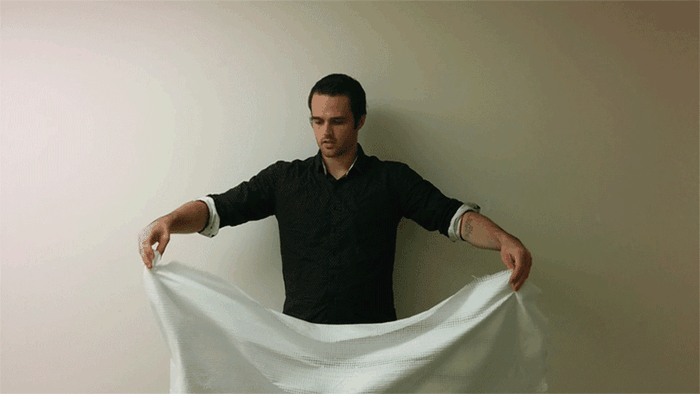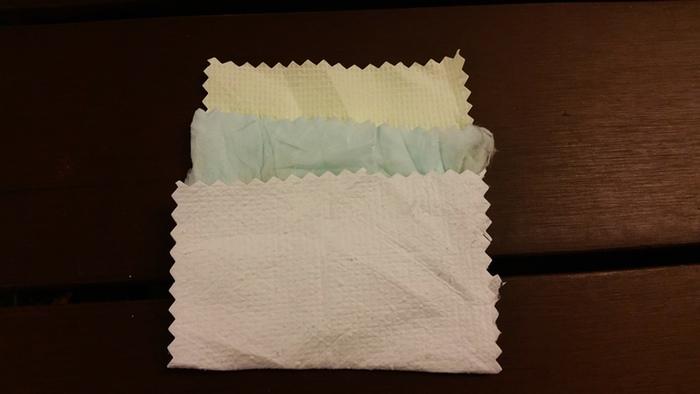The Electroloom Becomes the World’s First 3D Printer of Fabric – Launches on Kickstarter
 Some days, while covering the 3D printing space, I feel as though I have entered a time machine, pressed a few buttons and ended up 100 years into the future. This happened when I saw the first building constructed with a 3D printer and on numerous times since then. However, this latest story is one which seems so futuristic that it is almost hard to believe.
Some days, while covering the 3D printing space, I feel as though I have entered a time machine, pressed a few buttons and ended up 100 years into the future. This happened when I saw the first building constructed with a 3D printer and on numerous times since then. However, this latest story is one which seems so futuristic that it is almost hard to believe.
 Launching on Kickstarter just yesterday, a device called the Electroloom looks to come to market. The Electroloom is a 3D printer unlike any 3D printer you have probably ever imagined. It has the ability to 3D print fabric using a process similar to the electroplating of metals.
Launching on Kickstarter just yesterday, a device called the Electroloom looks to come to market. The Electroloom is a 3D printer unlike any 3D printer you have probably ever imagined. It has the ability to 3D print fabric using a process similar to the electroplating of metals.
“Inspired by 3D printers, the maker movement, and accessible design, we set out to build a technology that enables people to design and manufacture clothes from scratch,” the developers behind the Electroloom explained. “And now, after a year and a half of development, we’re ready to find our first set of alpha testers.”
The electroloom looks similar to a conventional 3D printer in some ways, but it functions in a way completely dissimilar. The Electroloom uses a process by which an electric field is utilized in order to determine where a special liquid nano-fiber solution is guided. Users create a template either by hand or via CAD software, which can be made up of virtually any material, such as cardboard, vinyl, etc., and then place this template into the machine’s build chamber. From there, the electric field pulls the liquid solution directly onto the user created template, coating it evenly with a custom polyester/cotton blend, or other fabric of choice. Currently they are working on several materials including silk and acrylic as well. Once complete, the covered template is removed from the machine and the fabric should slide right off.
“Traditional 3D printed garments are typically constructed of intricate connections, like joints, that allow the material to bend and move, effectively creating chain-mail that mimics how fabrics actually move. Our material, however, is flexible and light by nature,” the Electroloom creators write. “It’s composed of countless tiny fibers (on the micro and even nano-meter scale), meaning all of your designs are guaranteed to flex, drape, and fold just like you would expect fabrics to do!”
As for the specifications of the machine, they can be seen below:
- Total dimensions: 1000mm x 1080mm x 620mm
- Interior chamber: 900mm x 900mm x 600mm
- Maximum mold size: 800mm x 900mm
- Voltage range: 2-19kV
- Computer connection: USB
To find their first alpha testers, and raise additional funding, Electroloom decided to use crowdfunding platform Kickstarter. They are offering this incredible device to early-bird alpha testers starting at just $4,500, and they are looking to raise a total of $50,000. So far they seem to be well on their way of this goal, as in just less than one day they have already raised $13,700.
What do you think of this creation? Will this revolutionize custom clothing manufacturing? Discuss in the Electroloom forum thread on 3DPB.com. Check out the video below.
https://d2pq0u4uni88oo.cloudfront.net/projects/1816385/video-538744-h264_base.mp4
Podcast: Play in new window | Download
Subscribe to Our Email Newsletter
Stay up-to-date on all the latest news from the 3D printing industry and receive information and offers from third party vendors.
Print Services
Upload your 3D Models and get them printed quickly and efficiently.
You May Also Like
Stifel’s AM Forward Fund Launches, Looking for US Manufacturers to Invest In
The need for greater resiliency in the defense supply chain is real and urgent. One area the US government has been focusing on is building a faster and more sustainable...
3D Printing Financials: Xometry Cuts Losses, Grows Platform
Xometry (Nasdaq: XMTR) is entering 2025 with momentum. The company delivered record quarterly revenue and narrowed its losses, showing progress toward profitability. More importantly, for those watching the future of...
3D Spark Secures $2.2M to Tackle Manufacturing Bottlenecks
German startup 3D Spark has raised two million euros in a seed round. Swedish software investor Triplefair Partners led the round, with Fraunhofer Technologie-Transfer Fonds (FTTF) and Innovationsstarter Fonds Hamburg...
3D Printing Financials: Protolabs Reports 3D Printing Dip, But Metal 3D Orders Grow
Protolabs (NYSE: PRLB) kicked off 2025 with a mixed but steady performance. Revenue remained close to expectations, profits dipped slightly from last year, and the company was profitable despite ongoing...































